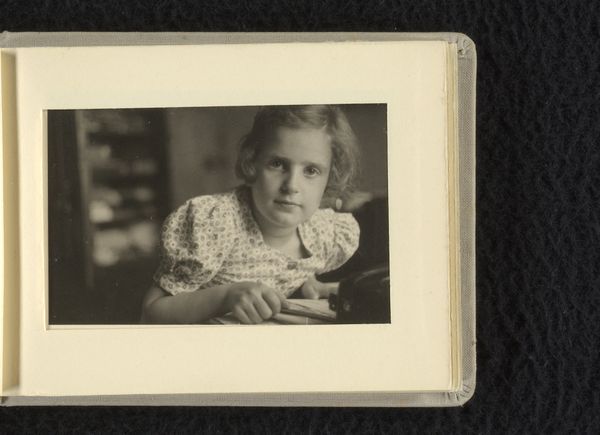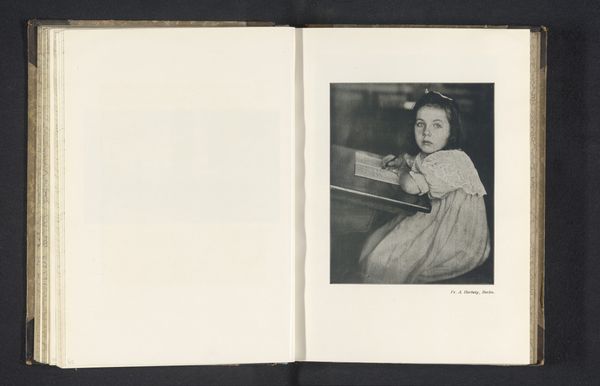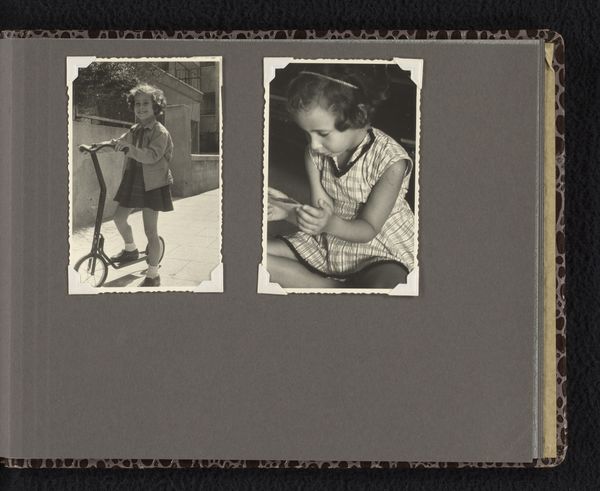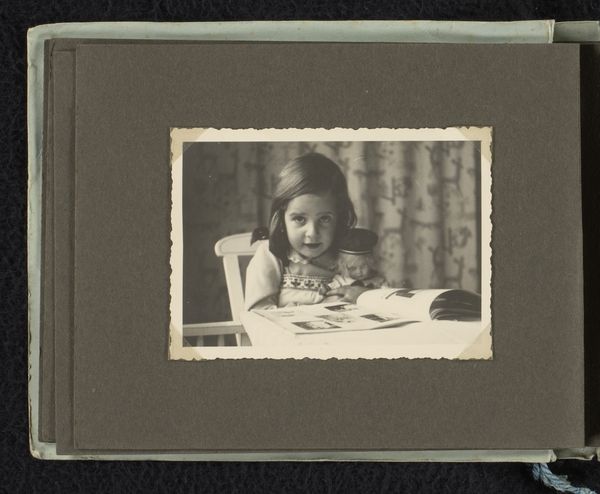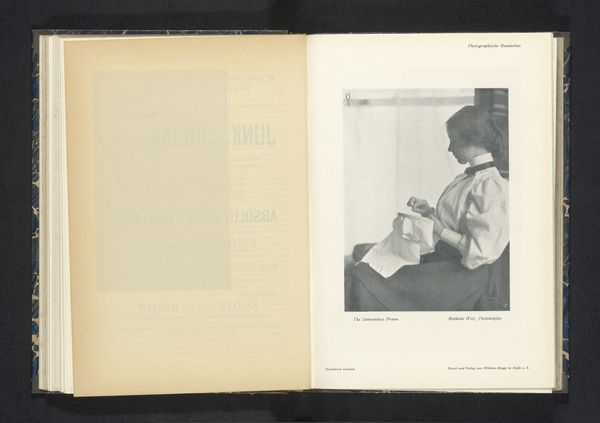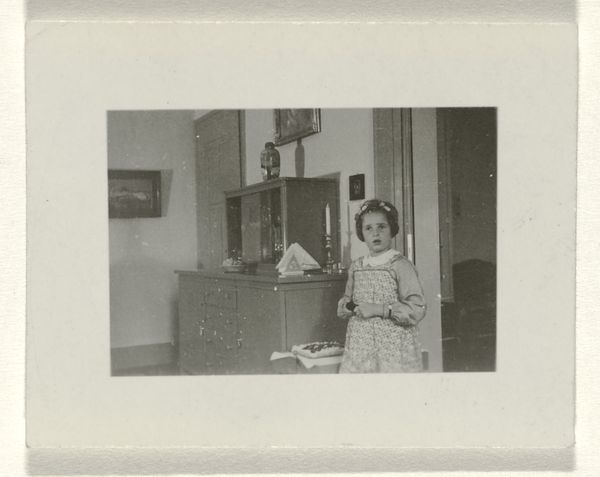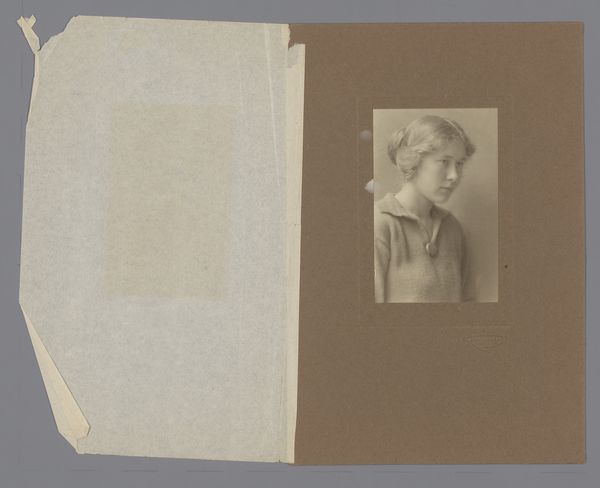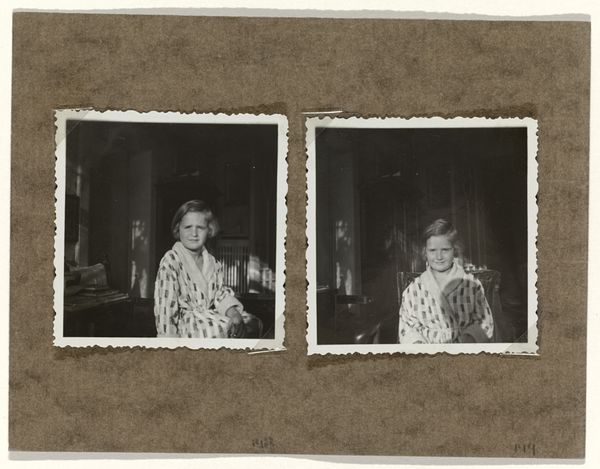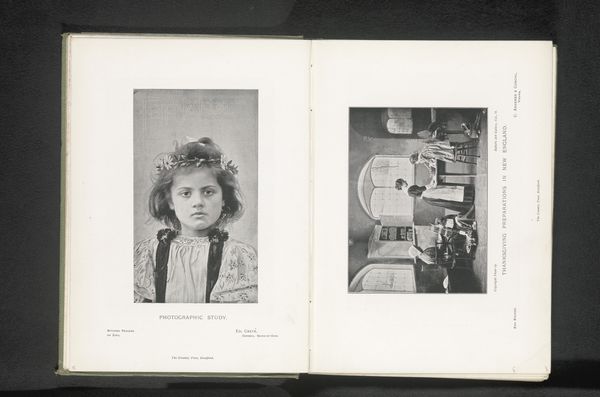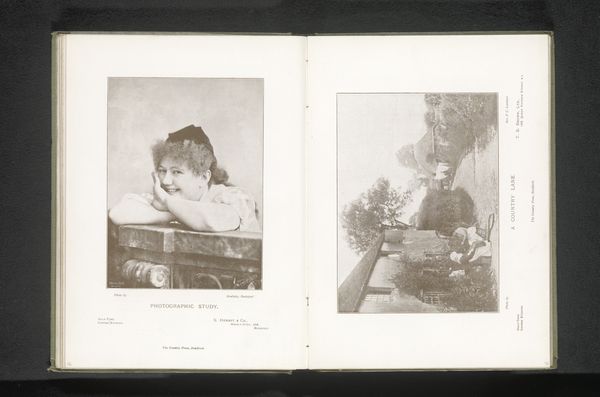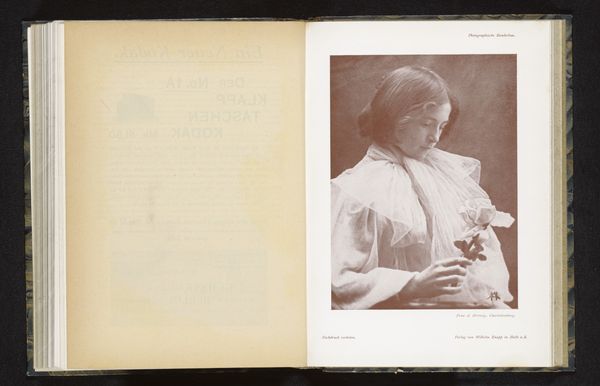
Isabel Wachenheimer aan een tafel met vaas met bloemen, 1931-1937, Stuttgart / Pasfoto van Isabel c. 1931 - 1937
0:00
0:00
photography, gelatin-silver-print
#
portrait
#
photography
#
gelatin-silver-print
#
modernism
#
realism
Dimensions: height 60 mm, width 86 mm, height 81 mm, width 107 mm
Copyright: Rijks Museum: Open Domain
Editor: This is a gelatin-silver print, titled "Isabel Wachenheimer aan een tafel met vaas met bloemen, 1931-1937, Stuttgart / Pasfoto van Isabel," so roughly 1931 to 1937. It depicts a girl and a vase of flowers. I’m immediately struck by its simplicity, and that makes me curious about the intent of the image. What do you see here, taking it all in? Curator: What I find most interesting is the interplay between the domestic setting and the portrait format. It seems almost accidental, yet this family snapshot, probably from an album, carries significant weight considering the Wachenheimer's story. The gelatin silver print itself speaks to mass production, readily available materials, allowing middle-class families to create and preserve memories affordably. The flowers become, through the reproducibility of the photograph, both an act of preserving fleeting beauty and marking everyday life, even within the burgeoning threat of Nazi Germany. Editor: So, the materiality itself - the availability of photography - speaks to a cultural shift? How would that shift change our reading of this work? Curator: Precisely. Instead of high art, consider the photograph as a common object produced within a specific societal and political framework. This was likely a private image, a moment of family life. The ease of photographic reproduction meant that the act of documentation and memorialization became democratized, taken from the hands of elite painters, and situated in the hands of everyday folk who captured their lives in a new light, just before everything would tragically change for this family. Editor: It's amazing how a simple photograph, viewed through a material lens, can reveal so much about its historical context and cultural significance. I never considered the accessibility of materials like that. Curator: Seeing art as material culture allows us to see its significance in different, illuminating ways, challenging the traditional boundaries of what constitutes "art" and who gets to produce it. The focus shifts from artist genius to cultural function. Editor: Thank you! I’ll definitely carry that perspective as I look at art.
Comments
No comments
Be the first to comment and join the conversation on the ultimate creative platform.
